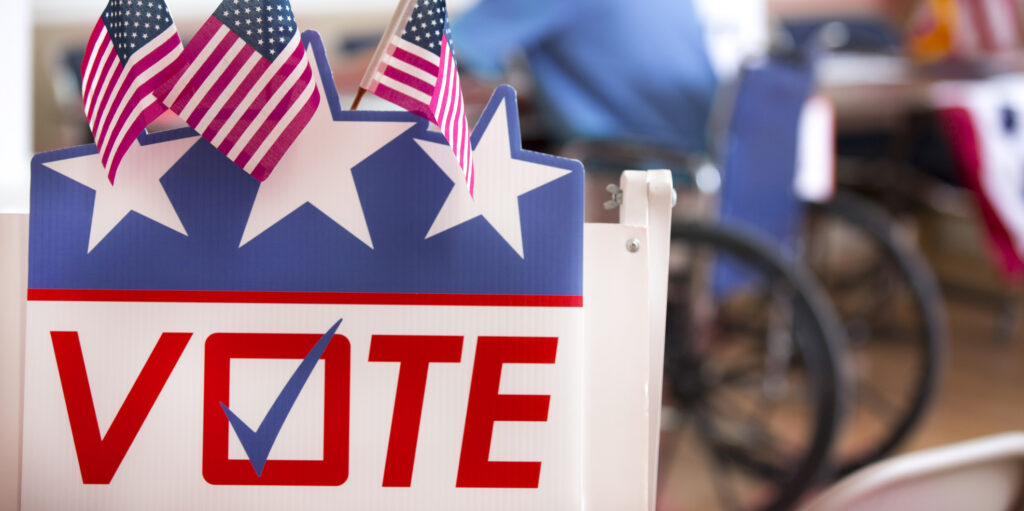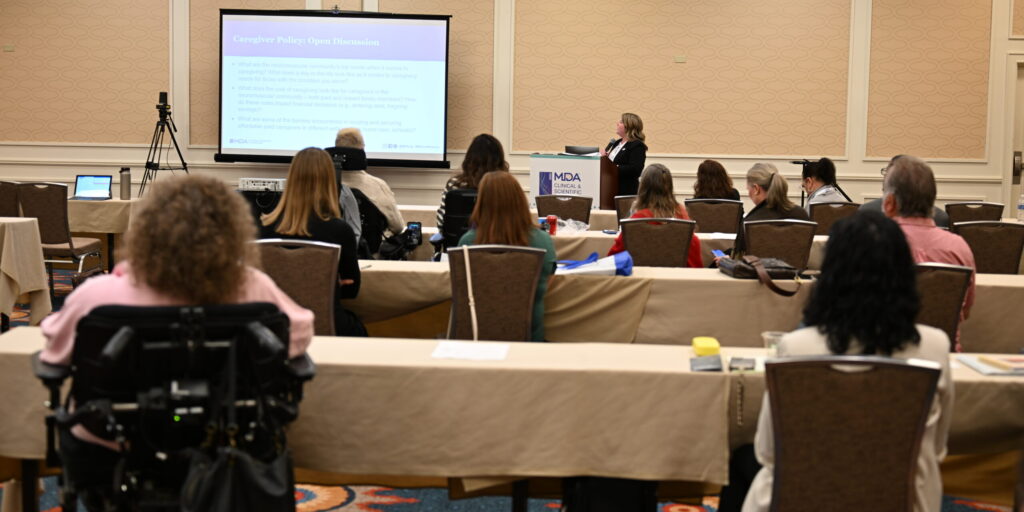
Election 2022: Know Your Rights
By Michael Lewis | Wednesday, September 14, 2022
Election Day is Tuesday, November 8th. This year, all 435 seats in the U.S. House of Representatives, 35 Senate seats, and 36 gubernatorial seats are on the ballot, in addition to candidates for numerous state and local offices. With so many races up for grabs, every vote is critical.
Everyone has a right to vote
Federal law requires that every U.S. Citizen age 18 or older has a right to vote, regardless of whether or not they have a disability.
All Americans with disabilities also have the right to:
- An accessible polling place
- An accessible ballot
- Accommodations to help you vote (you can bring someone with you to help you vote)
However, even though accessible voting is a right, there may still be barriers to consider before casting a ballot. Planning ahead by following the steps in this guide will help you anticipate practical considerations when going to vote.
Step 1: Register to vote
If you’re not already registered to vote, register as soon as possible! It’s key to remember that every state has different rules, so go to www.vote.gov for information on how to register to vote where you live. Be sure that you follow all the guidelines for your state to ensure that you register with enough notice to cast your ballot in the upcoming election.
Step 2: Find your polling place
A variety of voter organizations offer great online resources for locating your polling place. Connecting with your local election officials through the US Vote Foundation (https://www.usvotefoundation.org/) or local government websites also will allow you to gain specific information about your local polling options. You can also visit www.vote.org which includes polling locators for all 50 states. Locating your polling place is a crucial step to forming your voting plan.
Step 3: Find out if your voting location is accessible
Locate your polling place and reach out to your local election officials to ask about accessibility. Identify and request a polling place reassignment if your designated polling place is not accessible. The key is to call ahead. For example, will you need a wheelchair accessible polling location? Reach out to your election officials to ensure your assigned polling place has a ramp or accessible entry.
Step 4: Accommodations at the polls
Voters with disabilities are not only entitled to an accessible polling location, but they are also entitled to an accessible ballot. This can include using an electronic voting machine at your polling location or your local Board of Elections office to help you mark your ballot. If an electronic voting machine is not available, the Voting Rights Act of 1965 entitles you to bring a friend, family member, or other person with you to help you vote.
Step 5: Can’t get to your polling place? Find other voting options.
If your disability prevents you from being able to vote in-person on Election Day, many states allow voters to vote early or to request a mail-in or absentee ballot. Requirements for early voting or mail-in or absentee ballots vary widely from state to state. To find out the rules and requirements for early voting or requesting a mail-in or absentee ballot, visit https://www.healthyvoting.org/ or call your local Board of Elections.
Step 6: VOTE
Wrap-up: Now it’s time to make your plan to vote! Creating your plan will help ensure that your voice is heard in this election.
- Make sure you’re REGISTERED to vote. Once you know that you are, use the resources in this blog to:
- Decide HOW you will vote — by mail, in person, by dropping your ballot off at the election commission/polling place.
- Decide WHEN you will vote — put it in your calendar!
- Consider whether you need HELP to vote. If you do, considering asking a friend or family member.
- Follow through and VOTE!
If you’d like more information about how to cast your vote this year, check out the Know Your Voting Rights webinar below.
Disclaimer: No content on this site should ever be used as a substitute for direct medical advice from your doctor or other qualified clinician.




